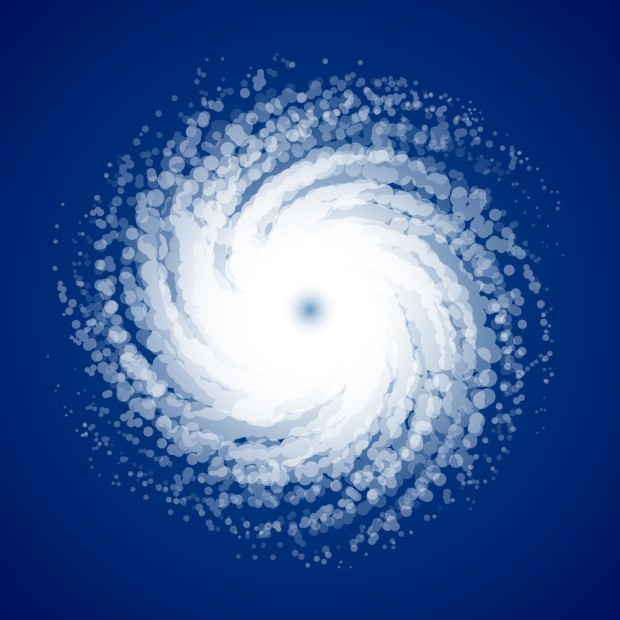This summer and fall, the Atlantic Ocean might become a testing ground for competing scientific theories.
After decades of warmth, there’s evidence that the ocean is cooling, a change that could mean fewer of the hurricanes that wreak havoc on coastal communities and their economies.
Part of a cycle called the Atlantic Multidecadal Oscillation, the chill probably will even overshadow the fading El Niño in the Pacific that should have made the 2016 hurricane season one of the more active in recent years.
“It is a very important pattern,” said Gerry Bell, a hurricane climate specialist with the U.S. Climate Prediction Center in College Park, Maryland.
The theory is that the Atlantic cools and warms every 25 to 40 years, changing the African monsoon and easterly jet stream, air pressure over the ocean and levels of wind shear, Bell said. All of these can add or detract from the lifespans of hurricanes, which can have consequences from Newfoundland to Nicaragua.
The thing is, not everyone believes the AMO affects hurricanes that way.
“There are competing hypotheses” for what has been happening in the Atlantic for the past 20 years, said James Done, a research scientist with the National Center for Atmospheric Research in Boulder, Colorado.
Warm Phase
The AMO has been in its warm phase since 1995, when the number of storms across the basin jumped after two decades of comparatively minimal activity.
The last time there was a cold phase was 1971 to 1994, and it clamped down on storm activity in the Atlantic, Bell said. “That is how strong that AMO signal really is.”
This is why the Bell and other seasonal forecasters, including Phil Klotzbach at Colorado State University, are calling for a near-average hurricane season this year.
Usually when an El Niño fades, as is currently occurring, weather conditions across the Atlantic interact to form more hurricanes. In 2010, after the last El Niño diminished, 19 Atlantic systems reached tropical storm strength or greater. The 30-year average is 12.
La Niña, a Pacific cooling, can also kill off wind shear in the Atlantic, allowing more hurricanes to form. If a La Niña develops this year, as expected, its impact on the Atlantic probably won’t be as potent because of the AMO. The AMO is a naturally occurring cycle and not part of patterns created by climate change.
Scientists Disagree
Another explanation for the drop in hurricane activity in the 1970s and 80s, as well as the dip in Atlantic sea surface temperatures, is air pollution, said Kerry Emanuel, a professor of atmospheric science at the Massachusetts Institute of Technology in Cambridge.
Emanuel said he believes the hurricane forecasters have it wrong. He defines the AMO as roughly an 11-year pattern, which he said is in line with the way oceanographers see it, and not the longer cycle Bell and others use it to explain changes in hurricane activity.
From World War I until the 1970s and 1980s, there was a rise in sulfate aerosols, Emanuel said. Governments then enacted laws to clean the air, and the levels of those aerosols, which blocked the sun’s heat, began to drop rapidly.
Hurricane Drought
Without the reflective aerosols, the sun could beat down on the Atlantic, warming it and thereby touching off an increase in hurricanes, which thrive in hot water.
“So we think the hurricane drought was man-made,” Emanuel said.
Bell said he wouldn’t comment directly on Emanuel’s theory. However, he believes the evidence going back to the 1850s supports his view of how the AMO works.
Determining who is right will take more study and probably a longer record, Done said.
The theory Bell supports seems to have more proponents, though it would be best to have at least 10 complete cycles before declaring the existence of an oscillation, Done said, and that doesn’t exist in the record yet.





















 First Atlantic Hurricane Forecast for 2026 Suggests Season Close to 30-Year Norm
First Atlantic Hurricane Forecast for 2026 Suggests Season Close to 30-Year Norm  California Workers Comp Combined Ratio for 2024 Highest in 20-Plus Years
California Workers Comp Combined Ratio for 2024 Highest in 20-Plus Years  Slideshow: Carrier Management’s 2025 Top Editor’s Picks (Unlocked)
Slideshow: Carrier Management’s 2025 Top Editor’s Picks (Unlocked)  Federal Aviation Notice Warned of Slackline Before Deadly Arizona Helicopter Crash
Federal Aviation Notice Warned of Slackline Before Deadly Arizona Helicopter Crash 




